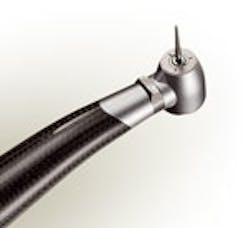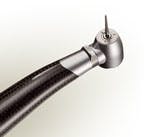The hardest-working equipment in your dental practice
by Marya Lessard
A properly maintained handpiece should function well for more than a year before it needs its first repair. The best practice to ensure a long lifecycle is to have an annual maintenance checkup on all of your equipment, and to follow manufacturer's guidelines for maintenance and usage. If your high-speed handpiece has city water flowing through it, sediments can build up. Once a year, send your handpieces to a certified repair facility, where they can be taken apart and given a thorough cleaning.
Every manufacturer has its own guidelines for maintenance, but most are very similar. For instance, after each use, most high-speed handpieces should be removed from the coupler and the bur should be taken out. The handpiece should be scrubbed under running water, and the exterior should be wiped down with a soft cloth or sponge. There is no need to wipe the outside of the handpiece with a chemical disinfectant, as the sterilization process completes this task. Also, heat from the sterilization process may combine with the chemicals to cause discoloration, corrosion, or the release of harmful gasses.
Before you sterilize, lubricate your handpieces. Some manufacturers have created cleaning solutions with lubricants in them to reduce the number of steps in this process. Depending on your handpiece, you have several options for lubricating, including aerosol lubricants that "push" oil to the handpiece head, and oil droppers, both of which require that the handpiece be connected to a purging system to flush out excess solution and debris.
An easier way to accomplish proper cleaning and lubrication of handpieces is to invest in an automatic lubrication system. You will still need to manually scrub and wipe down each handpiece, but automated systems take the guesswork out of determining how much cleaner and lubricant to use. Most of the systems have preprogrammed time cycles that allow you to choose the correct time needed to ensure proper lubrication and purging. Just click in your handpiece and let the system do the rest.
Once your handpiece is free of excess fluids and debris, you are ready to sterilize the handpiece according to the manufacturer's guidelines.
The staff at the Patterson National Repair Center estimates that 40% to 50% of all handpiece repairs are due to lack of proper maintenance and care. Avoid the risk of cross-contamination among patients, and take the time necessary to care for your dental handpieces. You will not only protect your investment, but you'll also enjoy the peace of mind that comes from properly caring for your equipment.
Marya Lessard has been Patterson Dental's National Technical Service manager since 2010. She joined Patterson in 1996 with the Minnesota distribution center. Since then, she has worked at the Minnesota Branch, the Corporate Marketing Team, and the Phoenix Branch as the operation manager before assuming her current role. You may contact Marya by email at [email protected]. Call the Patterson National Repair Center at (800) 328-7839.
Past DE Issues

